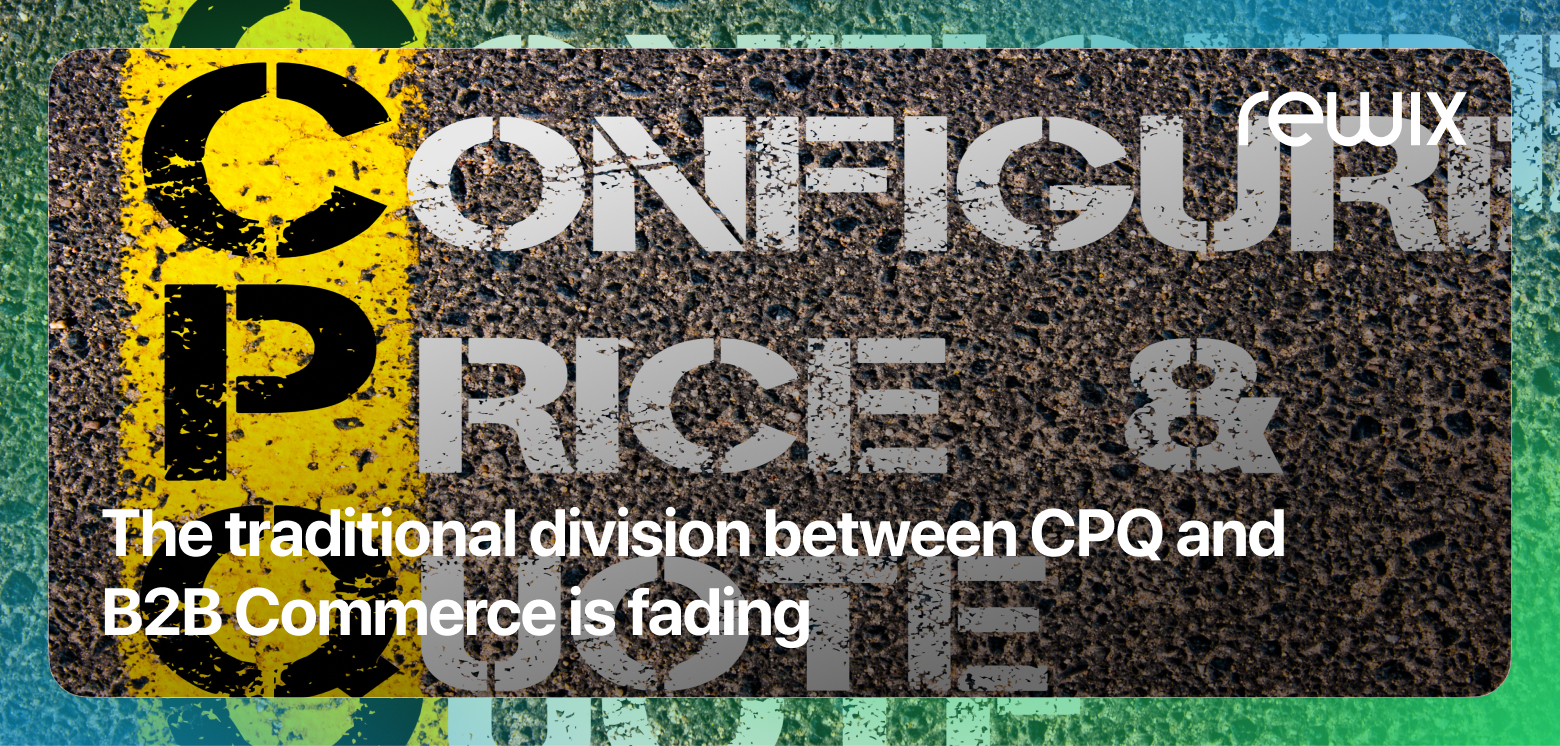Index
Other categories
25 September 2023
Conversion rate optimization in B2B ecommerce

Conversion rate optimization (CRO) is a critical aspect of any successful digital marketing strategy. Improving your website's conversion rate can have a significant impact on your bottom line by increasing the number of visitors who take desired actions, such as making a purchase, filling out a form or signing up for a newsletter. It involves analyzing user behavior, identifying obstacles to conversions and implementing strategies to remove them.
By focusing on CRO, companies can improve the overall user experience and maximize the value of their website traffic. Whether it is a B2C or B2B ecommerce site, CRO plays a crucial role in growing revenue and achieving business goals.
It is essential to constantly monitor and optimize conversion rates to ensure you are getting the most out of your online presence.
With the right approach and tools, you can unlock new opportunities for business growth and success in today's competitive digital landscape.
Understanding the B2B ecommerce landscape
Understanding the B2B ecommerce landscape is critical for companies that want to succeed in the digital marketplace. B2B ecommerce refers to online transactions between companies, in which products or services are sold from one company to another.
Unlike B2C ecommerce, which focuses on selling directly to consumers, B2B ecommerce involves complex buying processes, longer sales cycles, and more decision-making. With a deep understanding of the B2B ecommerce landscape, companies can adapt their strategies and optimize their websites to meet the specific needs and preferences of their target audience.
This includes implementing features such as custom pricing, bulk ordering options, and seamless integration with procurement systems. In addition, understanding the B2B buyer's journey and pain points will help companies create relevant content and provide valuable resources that assist potential customers during their decision-making process.
By staying informed about industry trends and customer demands, companies can stay ahead of the competition and position themselves as a trusted partner in the evolving B2B digital landscape.
Identifying conversion rate optimization opportunities.
Identifying conversion rate optimization opportunities is critical for companies that want to maximize online sales and revenue. A conversion occurs when a website visitor completes a desired action, such as making a purchase, submitting a form or signing up for a newsletter. By analyzing user behavior and data information, companies can uncover areas of their website that may be hindering conversions.
This includes evaluating the effectiveness of landing pages, product descriptions and call-to-actions. Using tools such as heatmaps, click-through rates and customer feedback surveys, companies can gather valuable information about user preferences and pain points.
This data can be used to make informed decisions about changes that will improve the overall user experience and increase conversion rates.
In addition, companies should consider conducting A/B tests to compare different approaches and determine which produce the highest conversion rates. By continuously identifying and exploiting opportunities to optimize conversion rates, companies can create a seamless online journey for their customers and achieve greater success in the competitive digital marketplace.
Strategies for improving website usability
Improving website usability is a crucial aspect of conversion rate optimization. When it comes to B2B e-commerce, companies need to make sure that their website is easy to use and navigate. One strategy for improving usability is to simplify the layout and design of the site. This includes using clear and intuitive navigation menus, organizing content in a logical manner, and incorporating search functionality that allows users to easily find what they are looking for.
In addition, companies should optimize website loading speed by compressing images and minimizing code. This not only improves the user experience, but also has a positive impact on search engine rankings.
Another important strategy for improving website usability is to make content easily scannable through the use of titles, subtitles, bullet points, and concise paragraphs. Users should be able to quickly find the information they need without having to read long blocks of text.
By implementing these strategies, companies can create an enjoyable and seamless browsing experience for their customers, thereby increasing conversions and revenue.
Streamline the checkout process to get conversions
Streamlining the checkout process is an essential step in optimizing conversion rates for B2B ecommerce websites. To ensure a smooth and efficient experience, companies should focus on simplifying the steps required to complete a purchase. This can be achieved by minimizing the number of form fields and requiring only essential information from customers.
In addition,implementing a progress indicator during the checkout process can help users understand where they stand with order completion, reducing any potential frustration or confusion.
Another effective strategy is to offer guest checkout options, allowing customers to make a purchase without creating an account. This eliminates barriers that might discourage users from proceeding with the transaction.
In addition,integrating multiple payment options, such as credit cards and online wallets, can cater to different customer preferences and increase the likelihood of conversion.
Finally, providing clear information about shipping and return policies during the checkout process helps build customer trust, reducing cart abandonment rates. By simplifying the checkout process with these strategies, companies can significantly improve their conversion rates and ultimately increase revenue.
Leveraging data and analytics for optimization
In the ever-changing world of B2B e-commerce, leveraging data and analytics for optimization is essential for companies that want to remain competitive.
By analyzing user behavior and engagement metrics, companies can gain valuable insights into their customers' preferences and pain points.
This data can be used to identify areas for improvement and develop targeted strategies to improve the overall user experience. For example, companies can use A/B testing to compare different website layouts or call-to-action buttons and determine which version generates the most conversions.
In addition,implementing heat mapping tools can provide visual representations of how users interact with a website, highlighting areas that may need optimization. In addition,using customer feedback surveys can provide valuable qualitative information about the user experience, enabling companies to address any problems or concerns early on.
By leveraging data and analytics in these ways, companies can make data-driven decisions that lead to more effective conversion rate optimization strategies and, ultimately, higher conversion rates and revenues.
Testing and experimenting with different approaches
Testing and experimenting with different approaches is a crucial aspect of conversion rate optimization. Companies must constantly test and refine their strategies to find the most effective ways to drive conversions.
This may involve running A/B tests, in which two versions of a web page or element are compared to determine which performs better. By splitting traffic between the two versions, companies can gather data on user behavior and identify which approach leads to higher conversion rates. In addition, companies can experiment with different messages and placements to see what resonates best with their target audience.
This could involve testing different headlines, calls to action or even color schemes.
By conducting these tests and analyzing the results, companies can gain valuable insights into what drives conversions and make data-driven decisions about their website design and content. It is important to remember that conversion rate optimization is an ongoing process, and ongoing testing and experimentation are essential to staying ahead of the curve in the competitive B2B e-commerce landscape.
Implement persuasive call-to-action techniques.
Implementing persuasive call-to-action techniques is a crucial aspect of conversion rate optimization. A call-to-action (CTA) is a request that encourages visitors to a website to take a specific action, such as making a purchase or signing up for a newsletter. To effectively implement persuasive CTA techniques, companies must focus on creating compelling, actionable CTAs that stand out on the Web page. The use of strong action verbs and concise language can help create a sense of urgency and encourage users to take immediate action. In addition, companies should consider the placement and design of CTAs to ensure that they are easily visible and accessible. Testing different variations of CTAs, such as different colors, sizes, or wording, can help identify what resonates best with the target audience. In addition, using social proof or testimonials in CTAs can help build trust and credibility, increasing the likelihood of conversions.
By implementing persuasive call-to-action techniques, companies can significantly improve their websites' conversion rates and drive visitors to take more valuable actions.
Optimizing the mobile experience to increase conversions
Optimizing the mobile experience is essential to increasing conversions in today's digital landscape. With the rise of smartphones and tablets, more and more users are accessing websites from mobile devices. For this reason, it is critical for companies to ensure that their websites are fully responsive and compatible with mobile devices.Optimizing for mobile devices involves designing and developing a website that provides a seamless browsing experience on all screen sizes.
This includes fast loading times, intuitive navigation and easy-to-read content.
Responsive design adapts to different screen sizes, ensuring that visitors can easily view and interact with the website on their mobile devices. In addition, companies should consider implementing features such as click-to-call buttons or one-click payment options to simplify the conversion process on mobile.
To further optimize the mobile experience, it is important to regularly analyze data and track user behavior through analytics tools.
By understanding how visitors interact with the website on mobile devices, companies can identify areas for improvement and make data-driven decisions to improve the mobile user experience.
Optimizing the mobile experience not only improves conversions, but also increases users' overall satisfaction and engagement with the brand.
Measuring and monitoring conversion rate performance
Measuring and monitoring conversion rate performance is a crucial aspect of any successful online business.
By monitoring and analyzing conversion rate, companies can gain valuable information about the effectiveness of their marketing efforts and identify areas for improvement.
A key metric to track is conversion rate, which represents the percentage of website visitors who complete a desired action, such as making a purchase or filling out a contact form. Analytics tools such as Google Analytics provide valuable data on user behavior, enabling companies to understand how visitors interact with their website and where they may encounter obstacles in the conversion process.
By tracking conversion funnels, companies can identify specific pages or stages in the user journey where abandonments occur and implement targeted optimizations to improve conversion rates.
In addition, companies should monitor other relevant metrics such as average order value, customer lifetime value, and return on ad spend. These metrics provide insights into the overall profitability of marketing campaigns and can help guide decision making for future strategies.
In general, measuring and monitoring conversion rate performance is essential for optimizing marketing efforts, improving customer acquisition, and driving business growth.
Join the eCommerce Revolution
Elevate your business, captivate your customers, and ensure a seamless shopping journey.
Start selling

